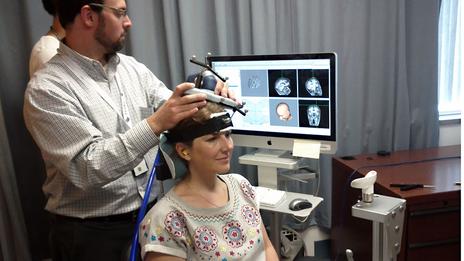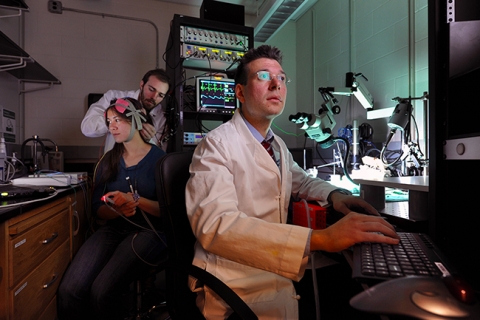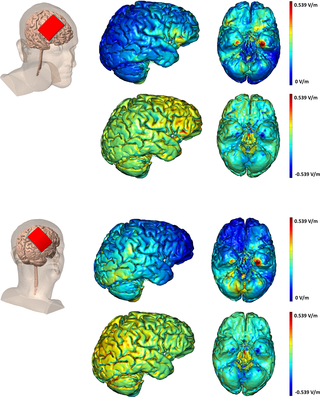 CC stands for cognitive control. In this study 28 participants took a PASAT test (try one yourself online the better you do the harder it gets). They also reported their state of mind, (PANAS) both before and after the PASAT test. Participants who received tDCS to dlPFC (dorsalateral prefrontal cortext) showed increased cognitive control and less stress from the test itself.
CC stands for cognitive control. In this study 28 participants took a PASAT test (try one yourself online the better you do the harder it gets). They also reported their state of mind, (PANAS) both before and after the PASAT test. Participants who received tDCS to dlPFC (dorsalateral prefrontal cortext) showed increased cognitive control and less stress from the test itself.
With this study, we provide first evidence that the enhancement of activity in the left prefrontal cortex by anodal tDCS during an adaptively challenging attention task improves performance parallel to, and in correlation with the suppression of specific task-induced negative affect. These data can be interpreted as a tDCS-supported shift of processing resources towards task-oriented performance away from preoccupation with task-related negative affect and cognition. Thereby they extend the notion of enhanced CC by prefrontal activation to internally generated distress-related distractors. More specifically, by demonstrating that tDCS-induced higher performance is associated with a lesser degree of feeling ‘upset’ with the task, these data may exemplify a subjective, experiential aspect of enhanced CC in challenging operations. Not least, these findings substantially support the concept of a tDCS-enhanced CC training as a new pathophysiology-based treatment approach of disorders associated with dysfunctional CC
tDCS seems to be (they say ‘might’), allowing our focus network to overpower the feedback network thereby shutting out the negative feedback (those self-doubting voices).
Since processing in the brain is highly competitive with different pathways mediating different aspects of information, the winners are those with the strongest sources of support [11]. Accordingly, increased activation of the dlPFC by anodal tDCS might strengthen its function to avert attention from affective reactions induced by performance errors and thus maintain goal-directed processing.
via PLOS ONE: Keep Calm and Carry On: Improved Frustration Tolerance and Processing Speed by Transcranial Direct Current Stimulation (tDCS).




 CC stands for cognitive control. In this study 28 participants took a
CC stands for cognitive control. In this study 28 participants took a